Spain
Segovia
Back to Europe 2015
Alcalá de Henares
Carbonero el Mayor
Valladolid
Segovia is located about halfway between Madrid and Valladolid, in a high dessert setting.
It is most famous for the 2,000 year-old Roman Aqueduct which runs through the center of the town,
and its great Cathedral. There are many other notable buildings and churches as well, most important being
the Alcazar. Due to its history, a thriving tourist industry exists there, with many people coming to explore the old streets.
It is especially crowded at fiesta time, drawing many people from the local pueblos who come to celebrate and soak up the atmosphere.
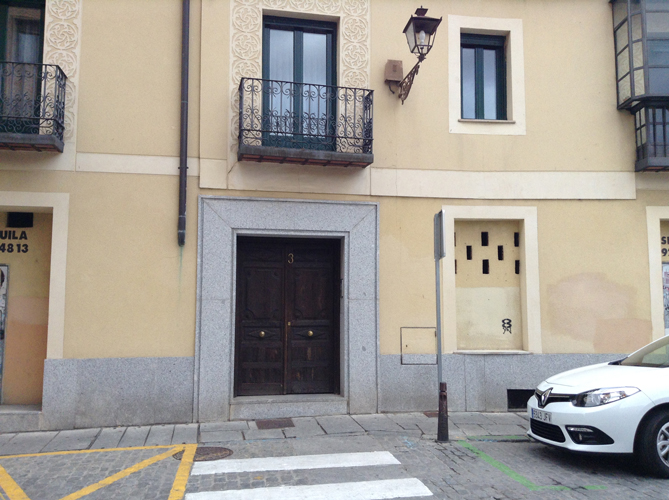 |
| Entrance to our flat. |
The Aqueduct
The most important Roman engineering work in Spain,
it dominates the central core of the city, passing roughly
Northwest to Southeast.
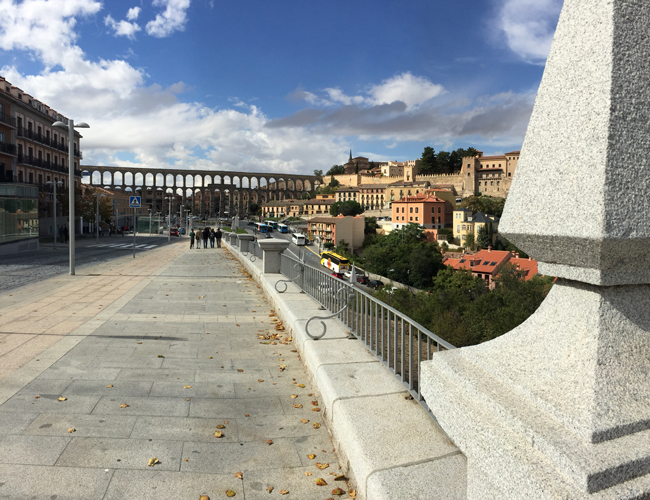 |
| Driving into Segovia from Madrid on Avenida de Padre Claret. |
 |
| Plaza Oriental from Calle San Juan |
 |
| Plaza Oriental from the South side. |
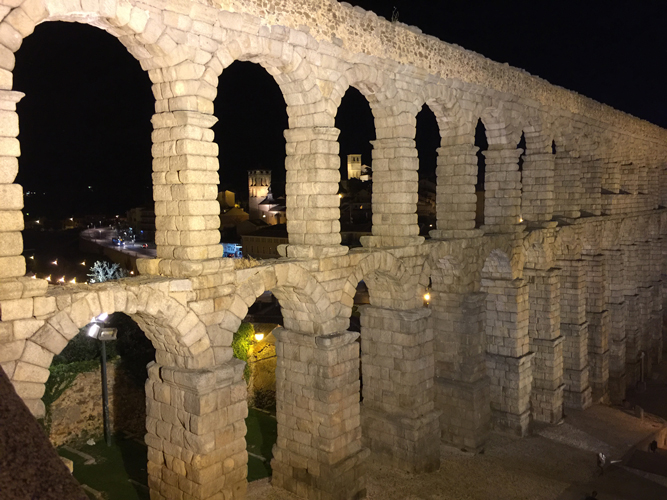 |
| Looking East towards Iglesia San Justo and Iglesia del Salvador. |
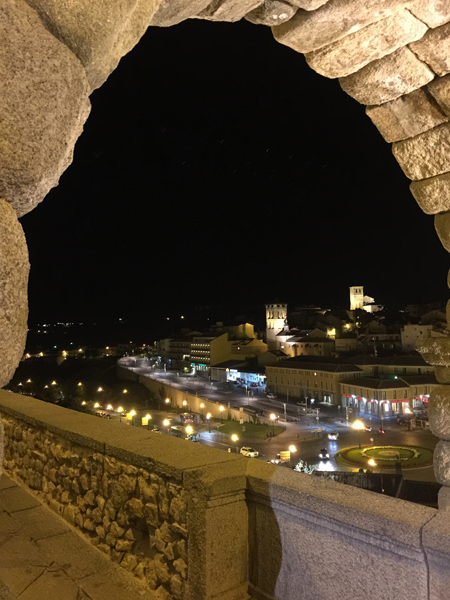 | 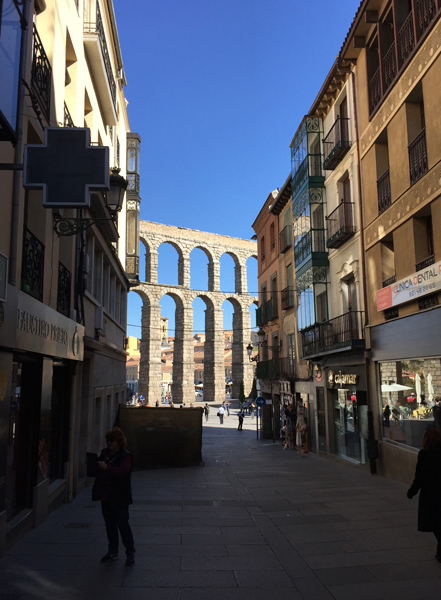 |
| No mortar was used for the 25,000 granite blocks and 170 arches. |
Calle Cervantes. |
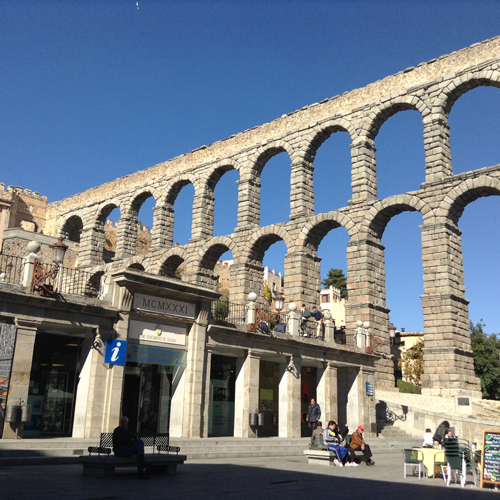 |
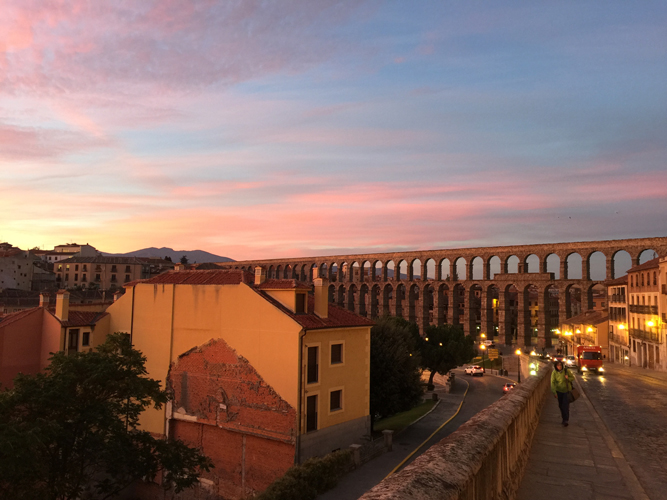 |
| Morning, from Calle San Juan.. |
 |
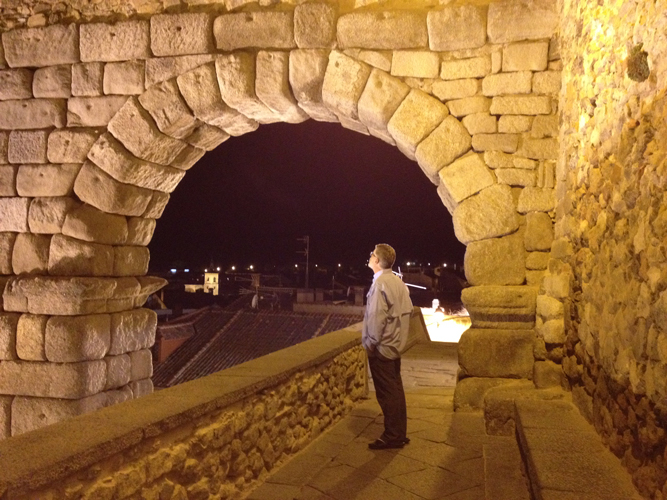 |
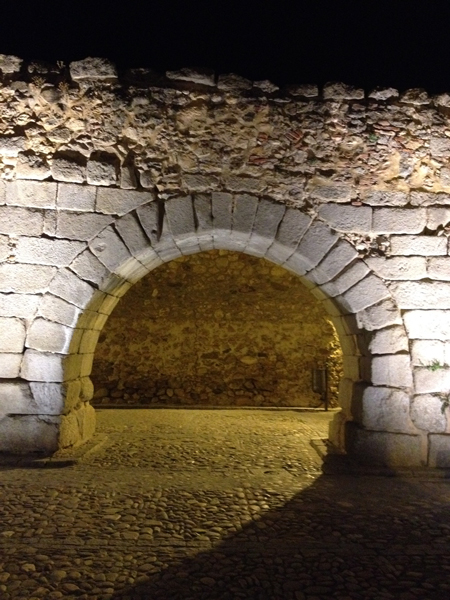 |
Food and Drink
Segovia is famous for Lechazo and Cochinillo - lamb and piglet roasted in wood-fired ovens.
The shop windows and market stalls are full of wonderful enticements, and the bars offer any number
of tasty pinchos or tapas. The wine - usually of Ribero del Duero D.O.C. origin - is outstanding. ¡Aproveche!
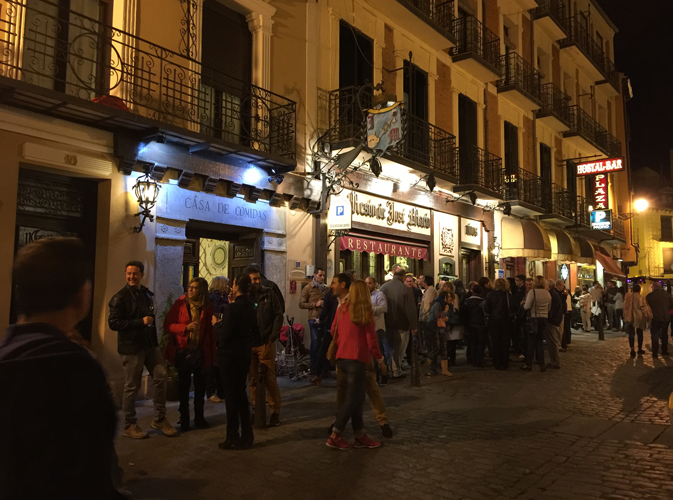 |
| The party is always on at Resturante Jose Maria, one of the best in Segovia. Especially during fiesta! |
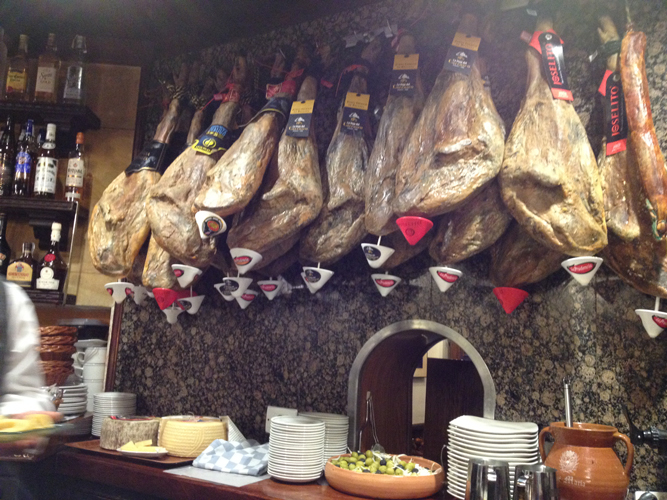 |
| Jamones hanging in the bar. |
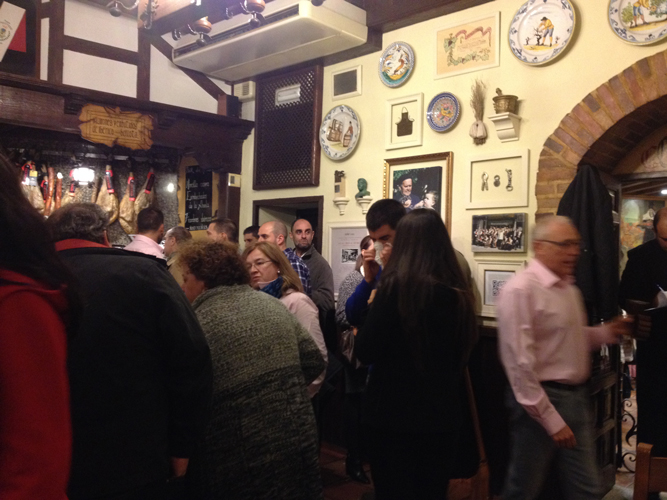 |
| Evening to night, Jose Maria is always full of people. |
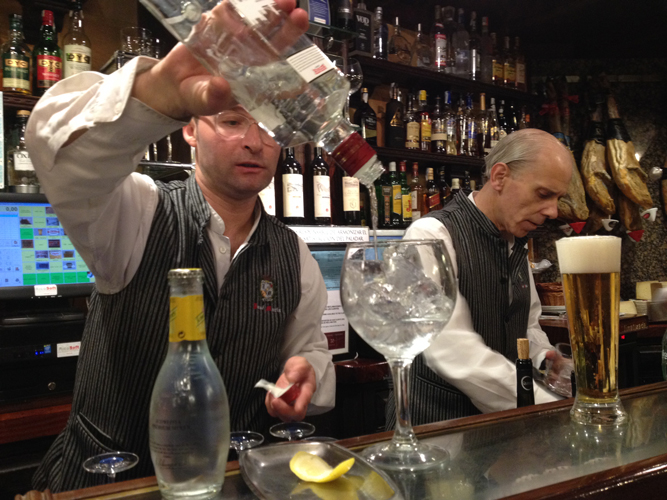 |
| Gin and Tonic at Jose Maria - the best! |
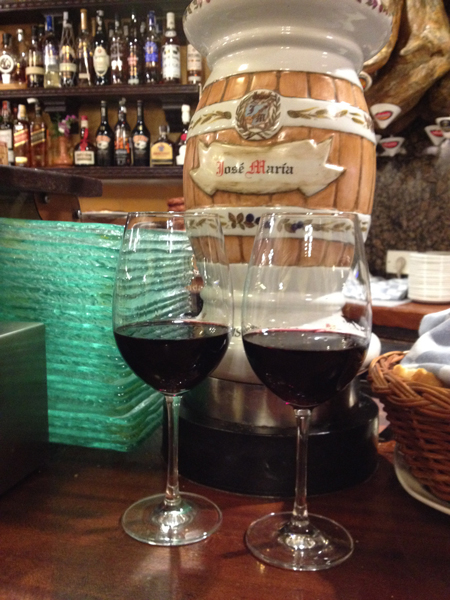 |
 |
| Salud! |
The restaurant produces its own private label. Delicious! |
 |
| Cochinillo at Jose Maria. |
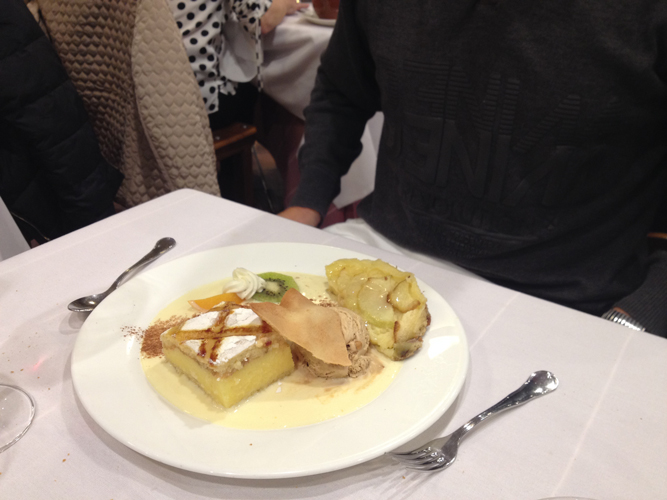 |
| Dessert, of course! |
 |
| Locor de Hierba, just to settle the stomach! Nice and cold. |
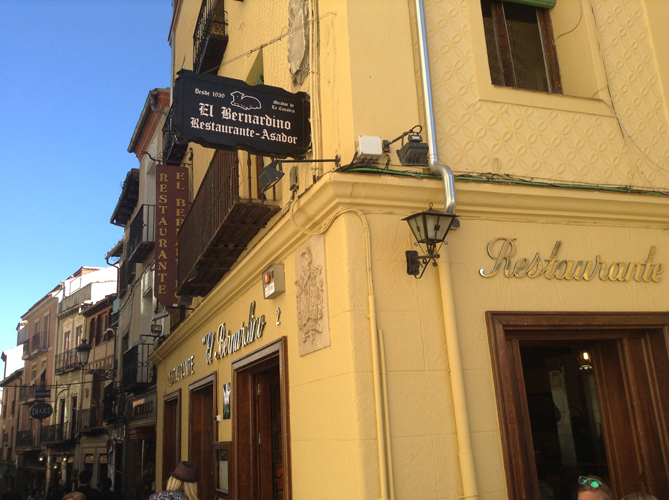 |
| Another classic Segovia restaurant. |
 |
| Dining on the terrace. |
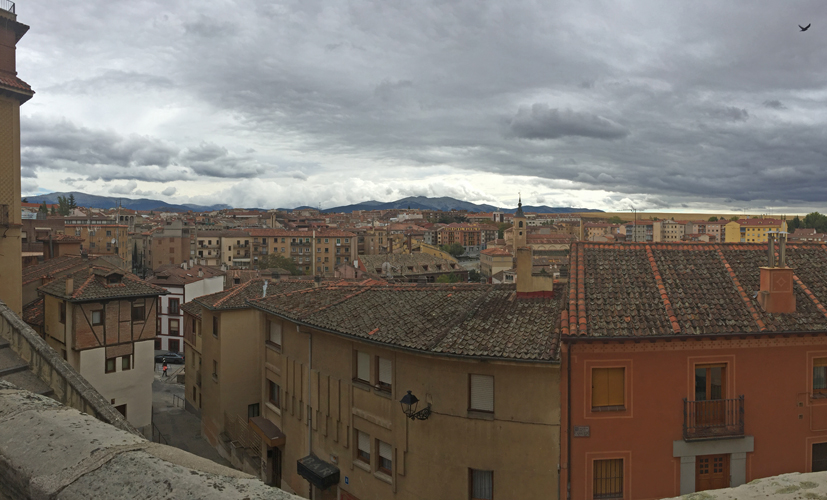 |
| View from the terrace. |
 |
| Lechazo at El Bernardino |
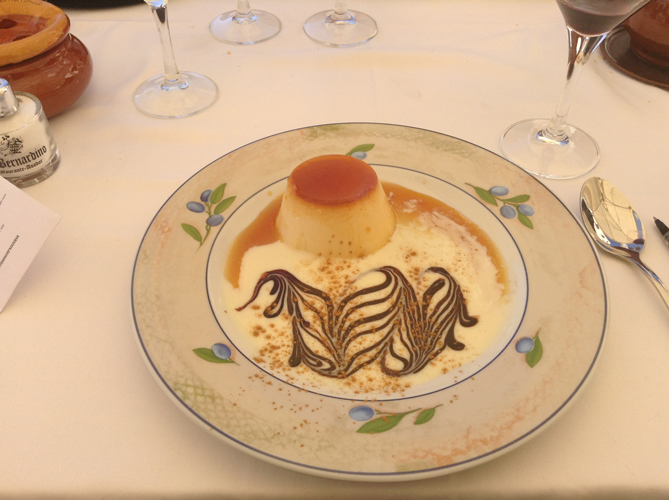 |
| Dessert at El Bernardino. Yum! |
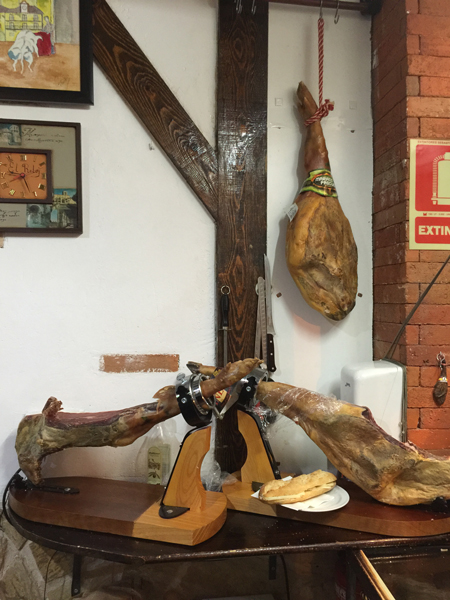 |
| Jamon at Bar Reloj. Mariano Pascual is a prime brand. |
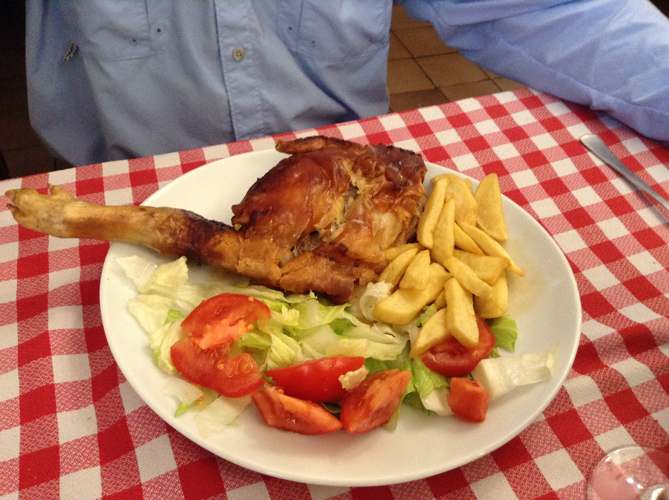 |
| A typical cochinillo comida - mid-day meal - in a Segovia restaurant. |
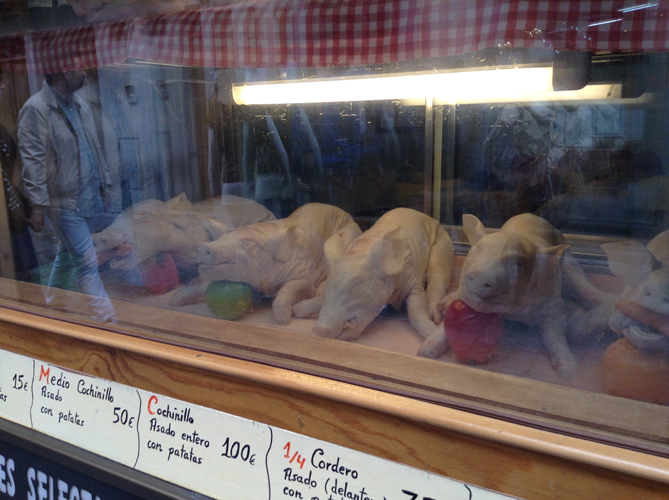 |
| Cochinillo on display in a restaurant window. |
 |
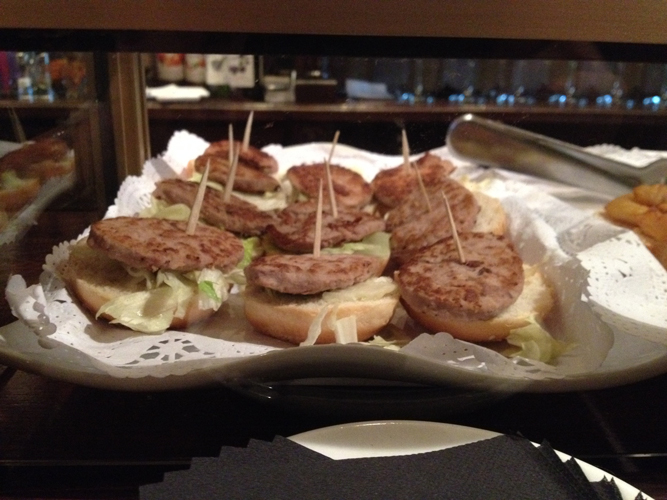 |
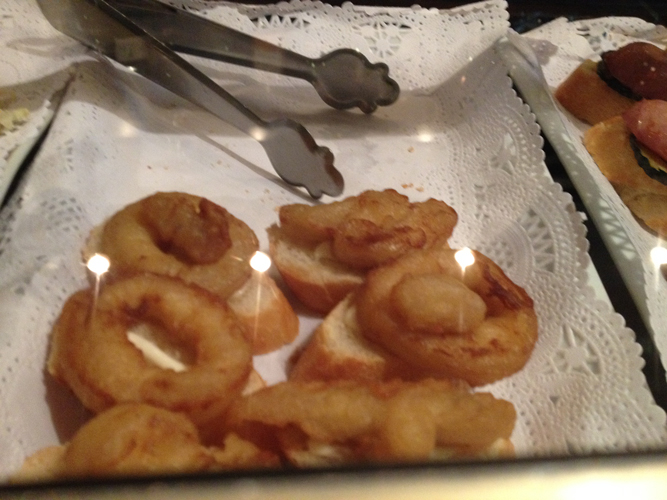 |
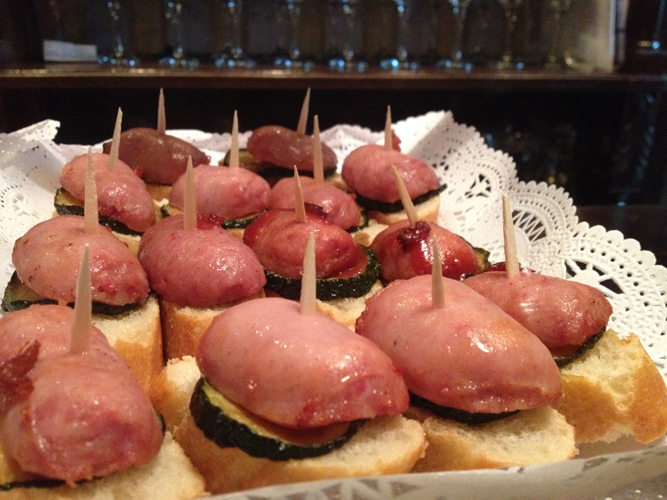 |
Window Shopping
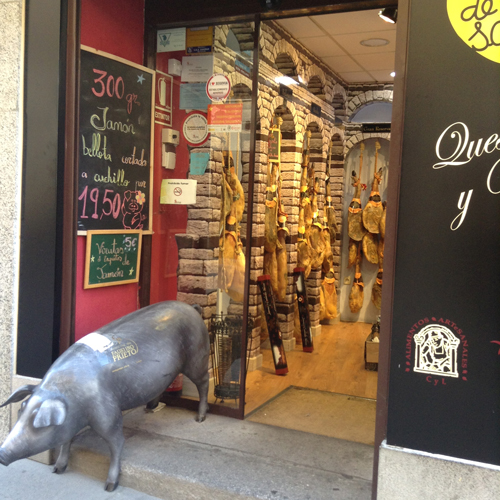 |
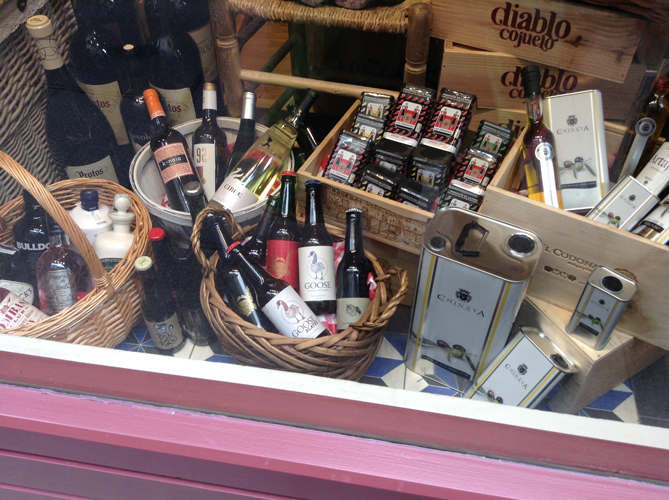 |
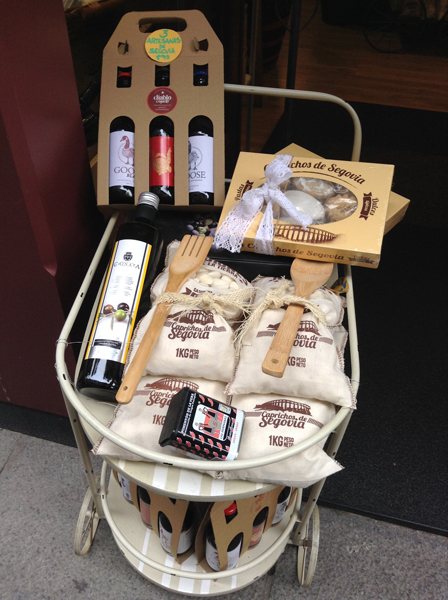 |
 |
 |
 |
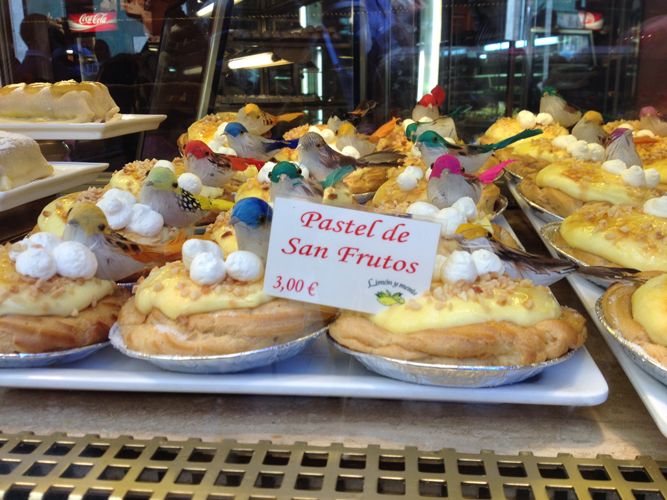 |
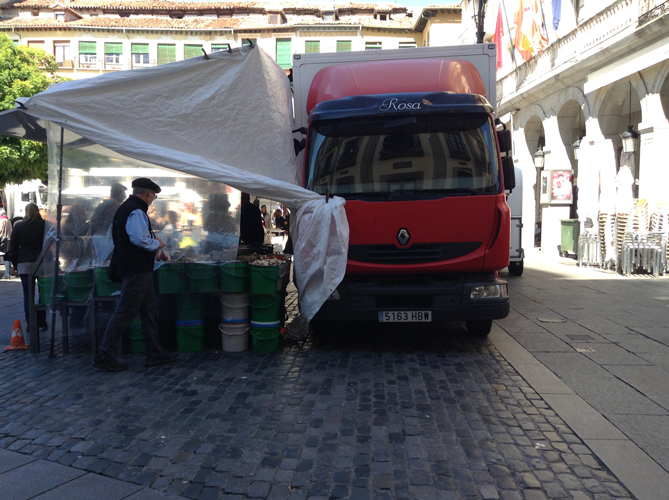 |
| Thursday is market day in the Plaza Mayor. |
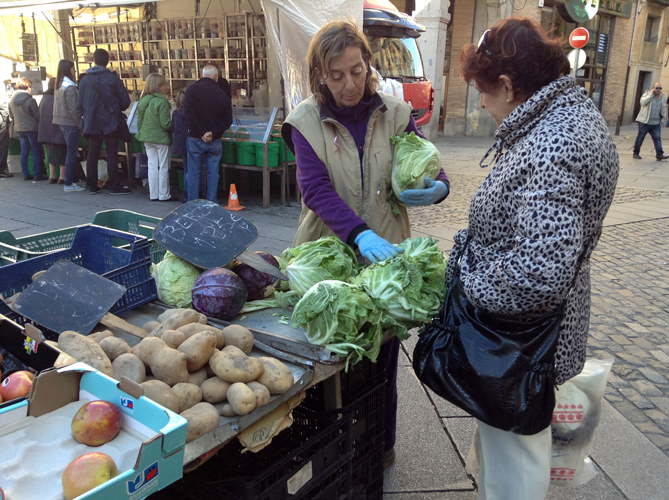 |
 |
 |
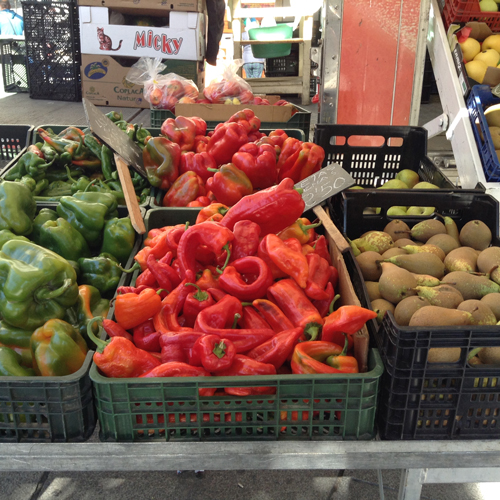 |
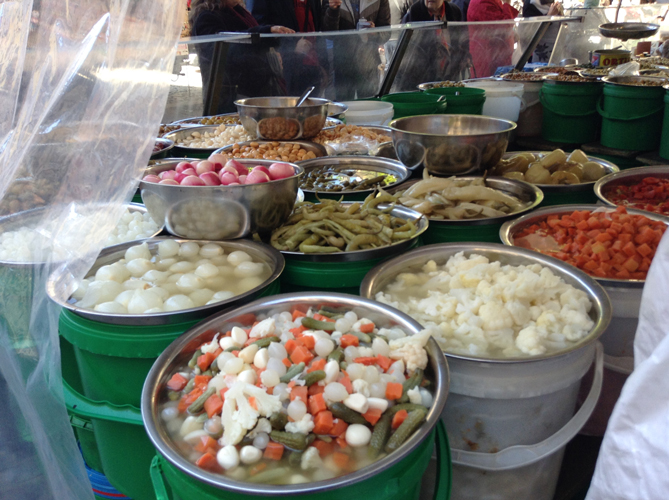 |
 |
| Olives are a big item in spain. |
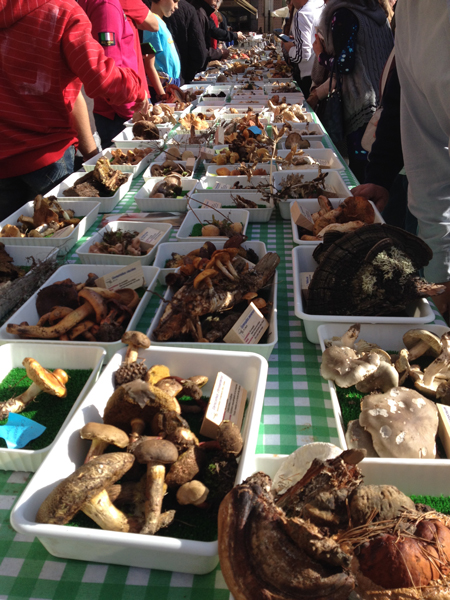 |
Segovia Cathedral
(Catedral de Santa María de Segovia)
Dominating the Plaza Mayor, the cathedral was built as a replacement for the original (destroyed by fire in 1520)
between 1525 and 1577, and stands on the highest point in the city. The last gothic cathedral to
be built in Spain, it was the site of the coronation of Isabella I as Queen of Castille.
 |
 |
| Portal of the cathedral. |
 |
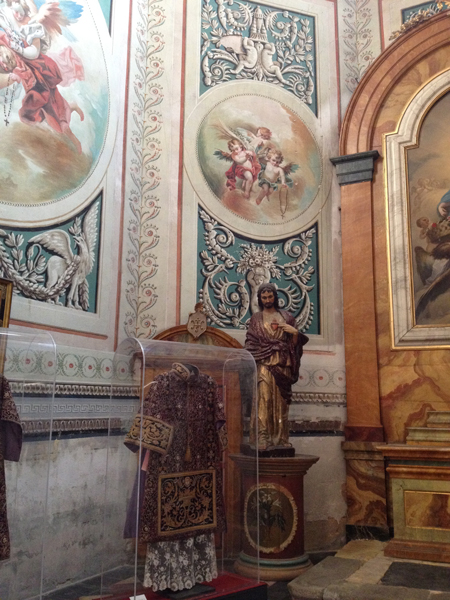 |
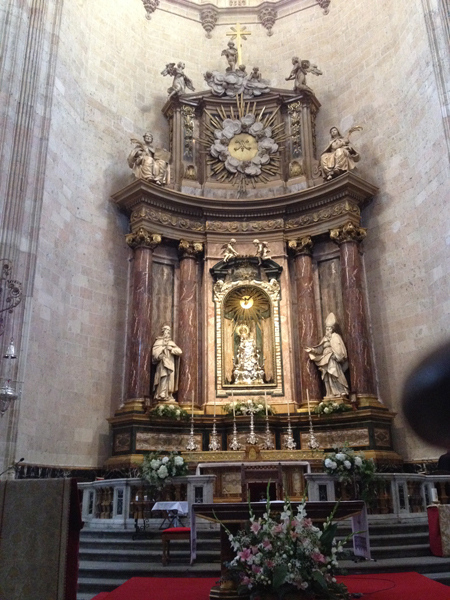 |
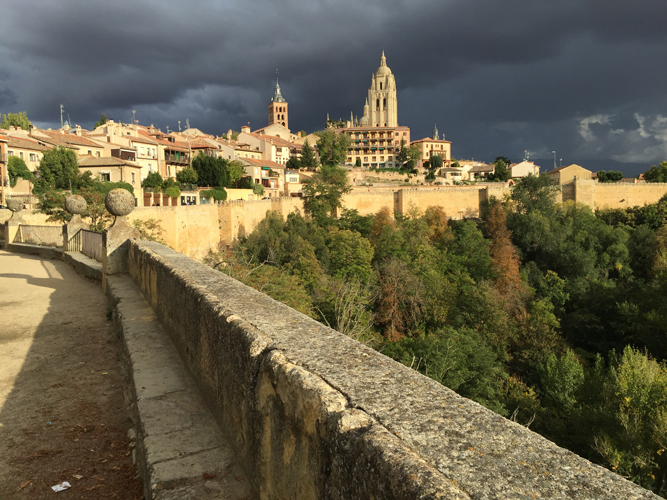 |
| The cathedral rises high in this view from the Alcazar. |
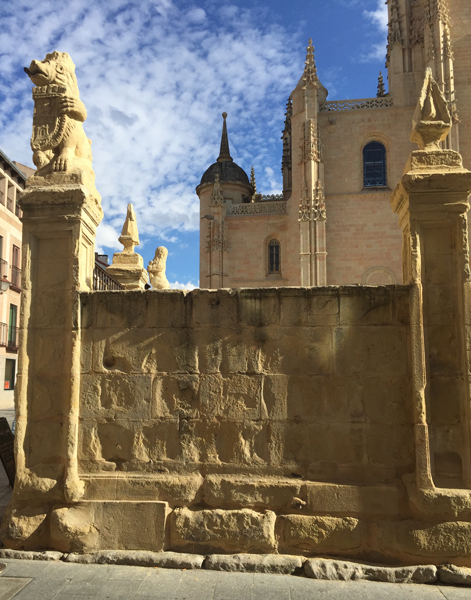 |
| Part of the old wall surrounding the cathedral courtyard. |
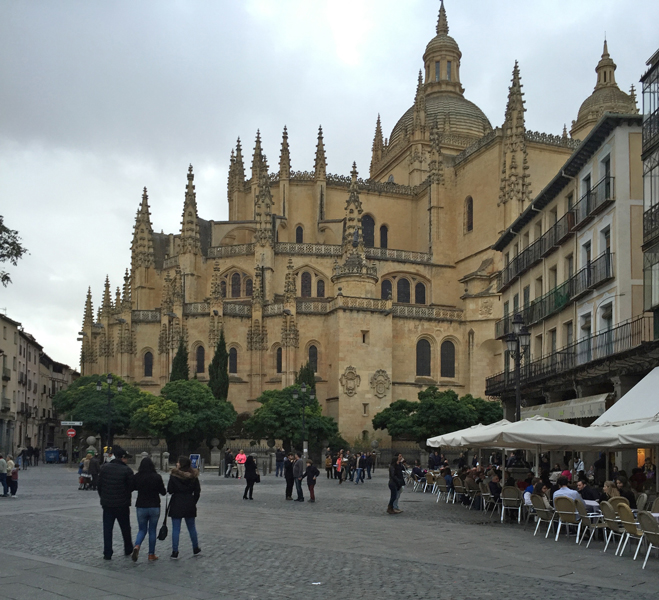 |
| The cathedral dominates the Plaza Mayor. |
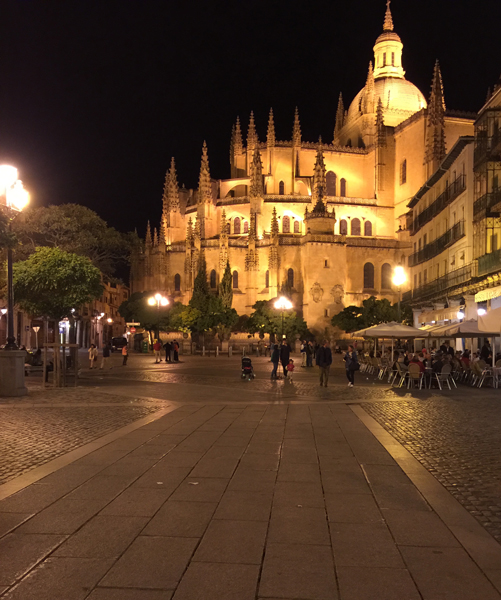 |
| During fiestas and other important days, the cathedral is illuminated at night. |
El Alcazar
Segovia Castle is one the most distinctive in all of Spain due to its unique ships’ bow shape and is said
to be one of the inspirations for Walt Disney’s Cinderella Castle. Built on the site of the former Arab and
preceding Roman fort, the castle became particularly important in the middle ages as it remained one of
the favorite residences of the royalty of Castile.
 | 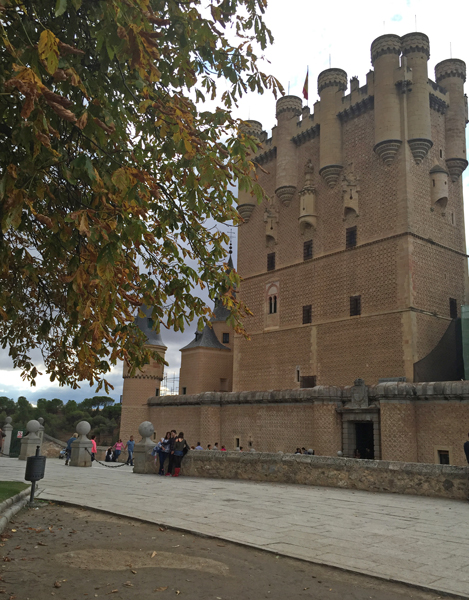 |
 |  |
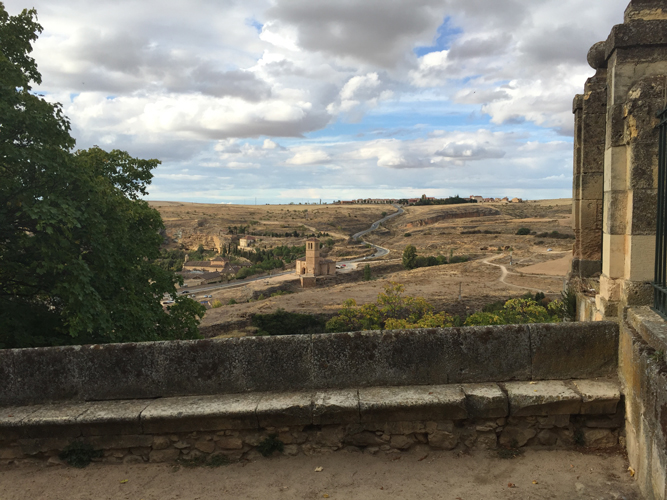 |
| View from the Alcazar toward Iglesia de la Vera Cruz and Zamarramala pueblo. |
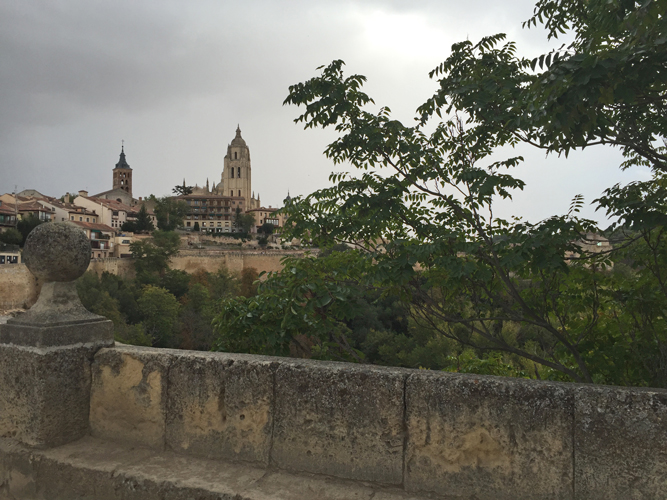 |
| View over the wall around the Alcazar towards the cathederal. |
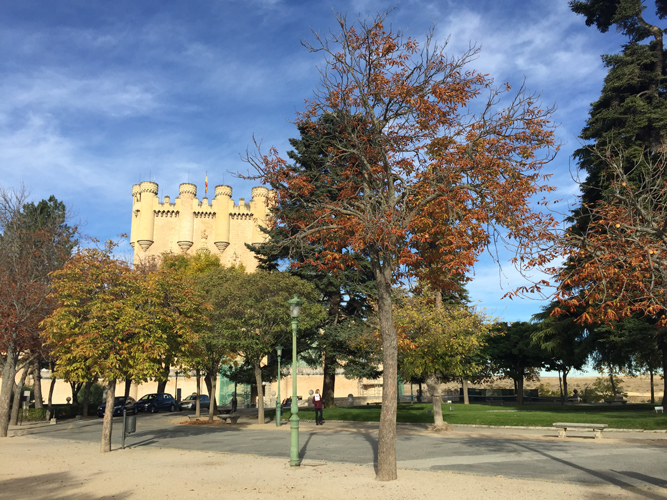 |
 |
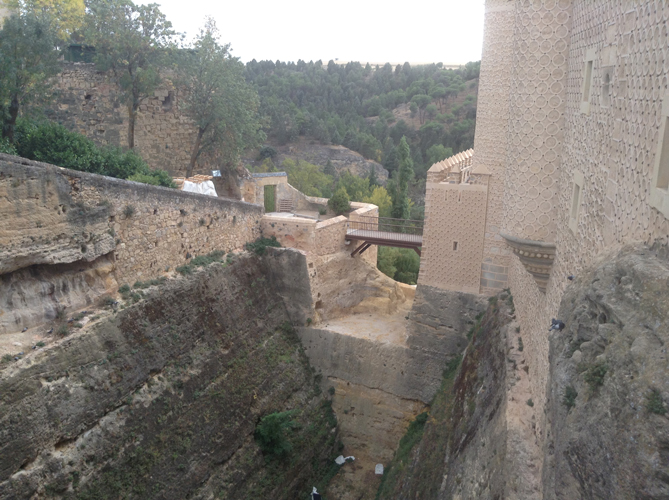 |
| The castle sits on a bed of solid rock. |
 |
| The unique "ship's bow" shape is visible here. |
Around the Town
Lots of great architecture and views in Segovia
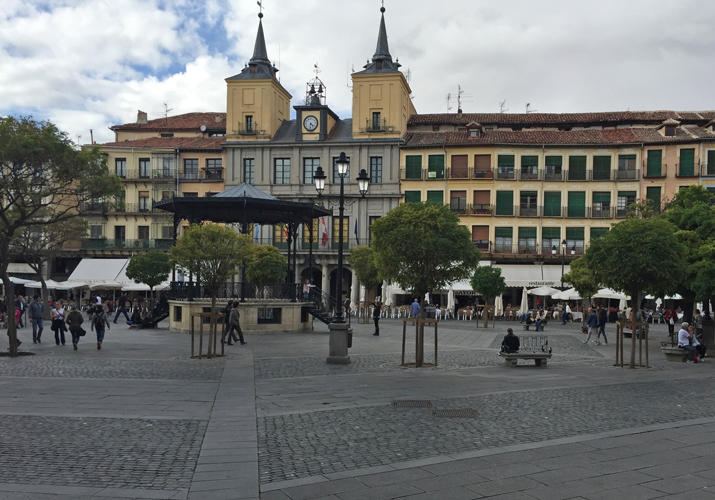 |
| The Plaza Mayor, El Ayuntamiento (city hall.) |
 |
| Plaza Mayor, Iglesia de San Miguel |
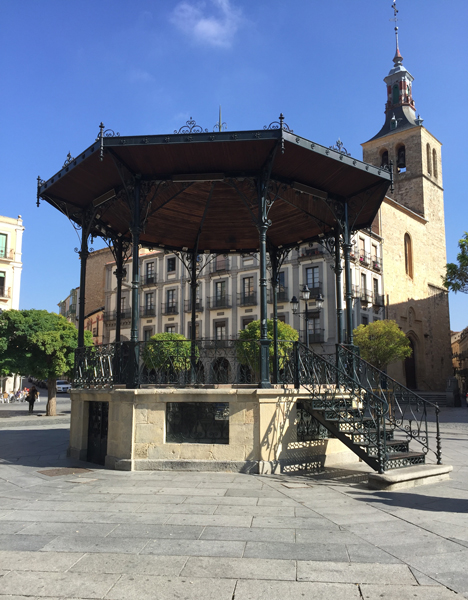 |
| Plaza Mayor, bandstand. Iglesia de San Miguel in the background. |
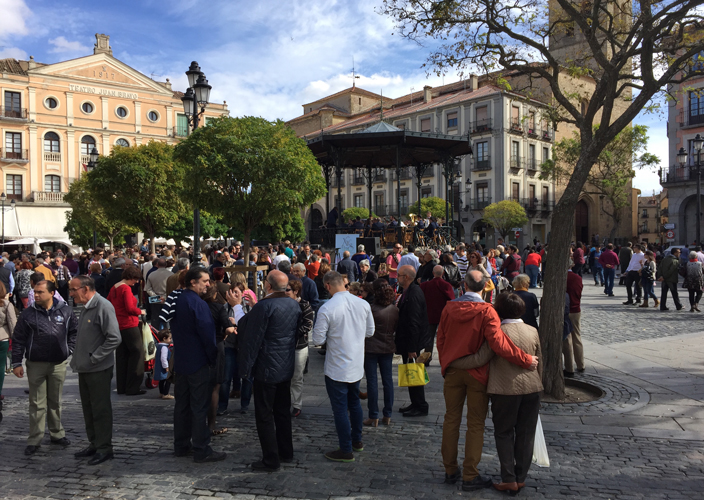 |
| During fiestas, the community band plays in the Plaza Mayor. |
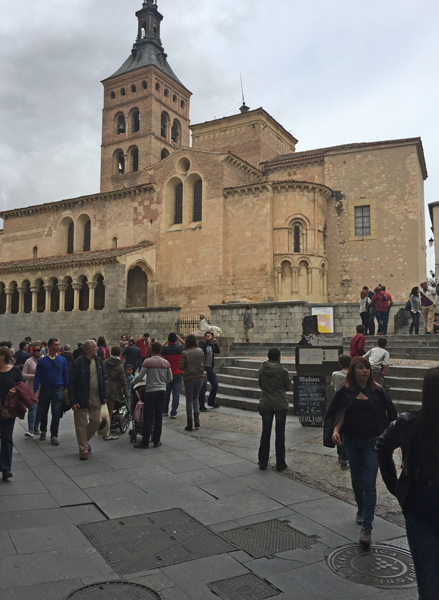
|
| Plaza San Martin, Iglesia San Martin. |
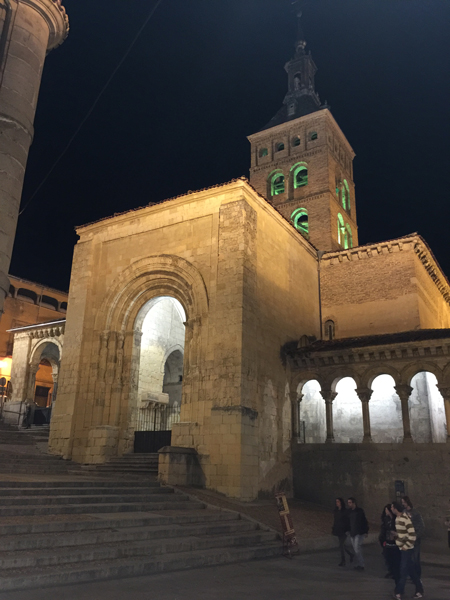 |
| Iglesia de San Martin at night. |
 |
| Juan Bravo, a leader of the rebel Comuneros in the Castilian War of the Communities of the 16th century, in Plaza de San Martin. |
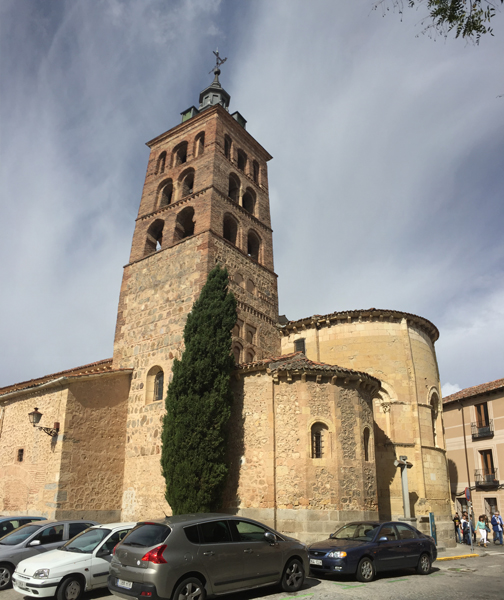 |
| Iglesia Parroquial de San Andres, dateing from 12th century, The tower was added later. |
 |
 |
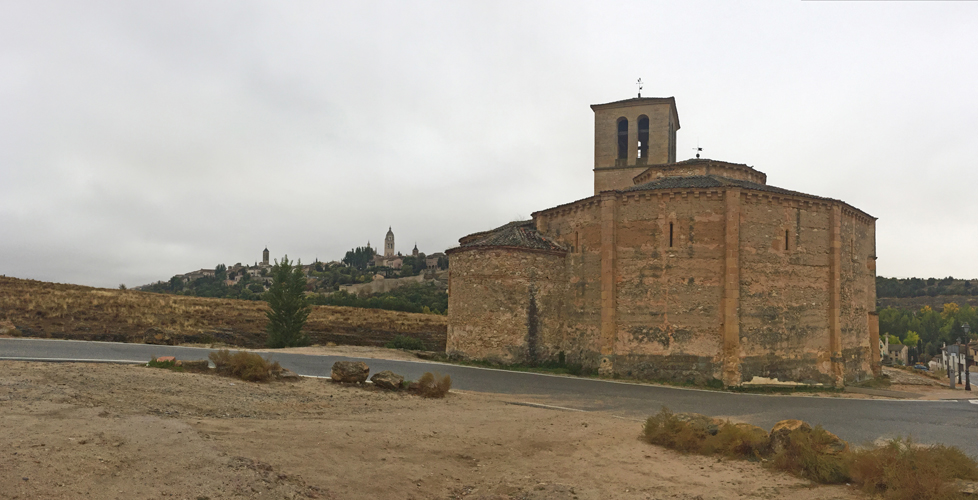 |
| Iglesia de Vera Cruz, begun in 1208 by the Knights Templar. |
| Convento de Santo Domingo de Guzman. |
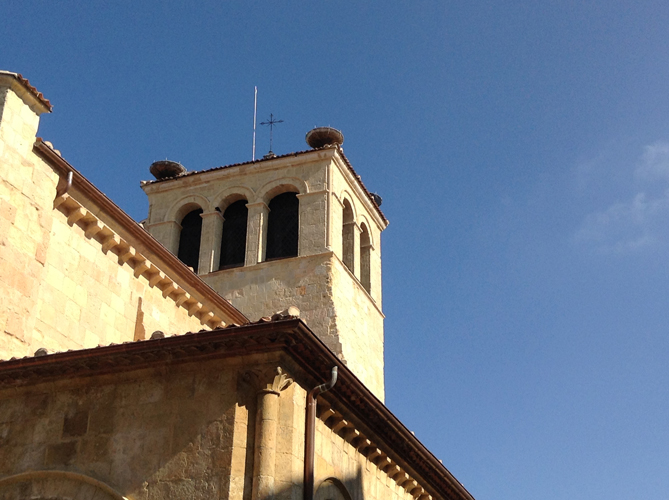 |
| Torre de Hercules, 13th century. The round bowls are nesting sites for storks. |
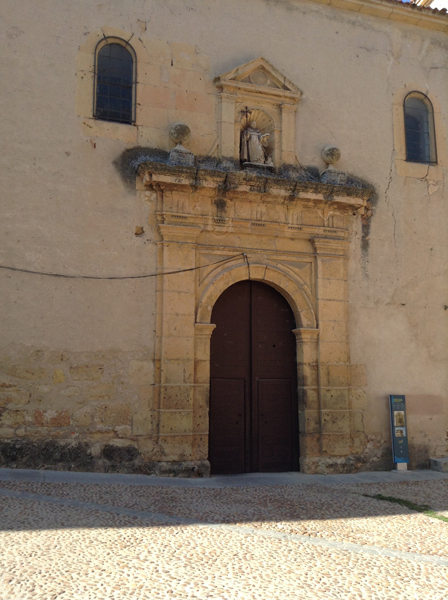 |
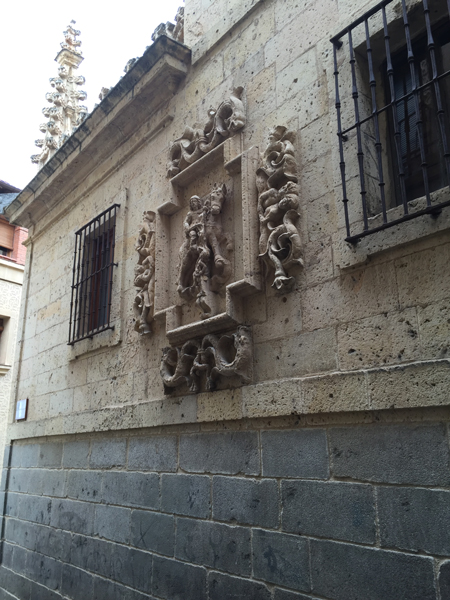 |
 |
| Souvenier shops close to the Plaza Mayor. |
 |
| Monasterio de Santa Cruz la Real. |
 |
| Portal, Monasterio de Santa Cruz la Real, 15th century. |
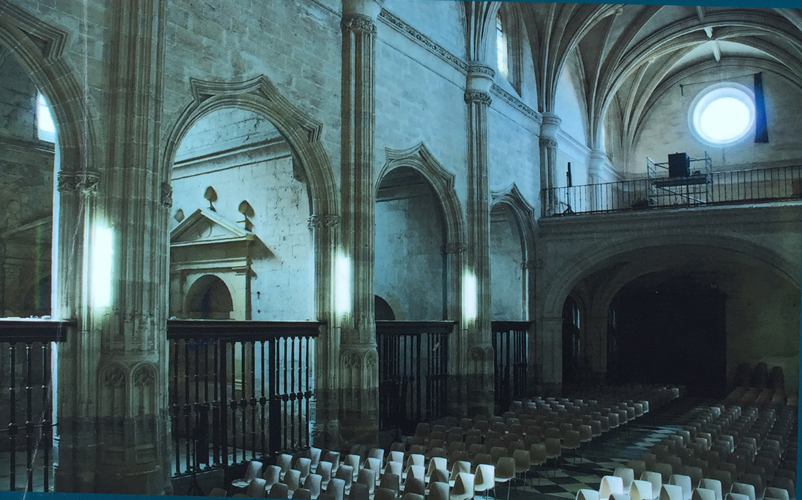 |
 |
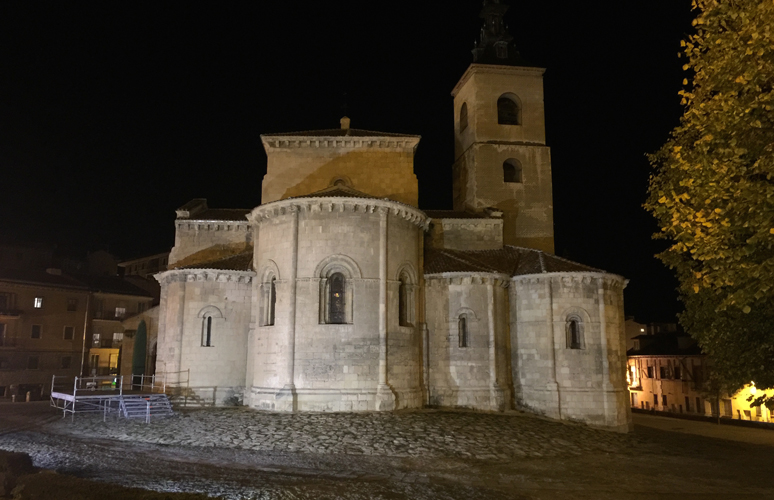 |
| Iglesia San Milan. |
 |
| Casa de los Picos. |
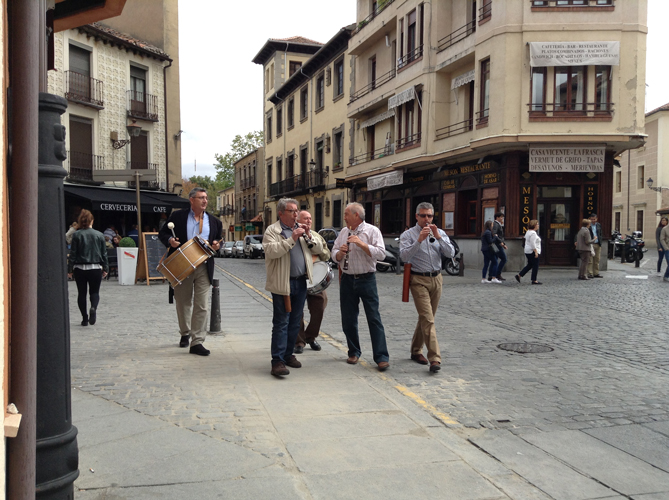 |
| Street musicians perform during fiestas. |
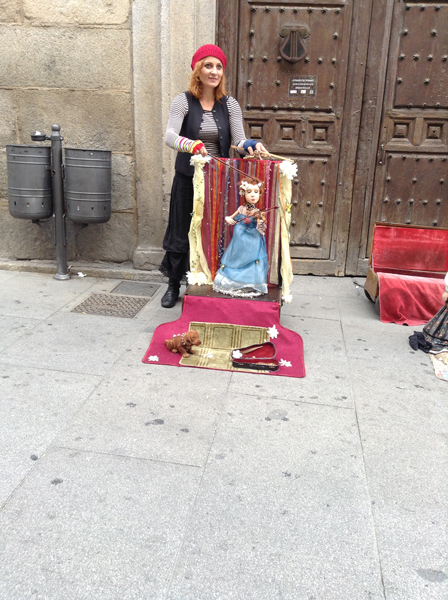 |
| Street performers during fiesta. |
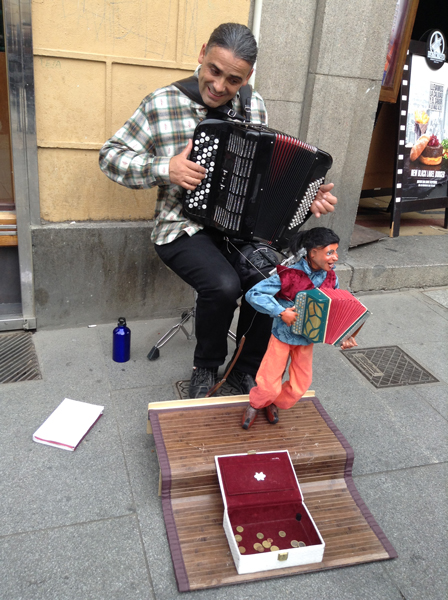 |
 |
| Underground disposal/recycling bins. |
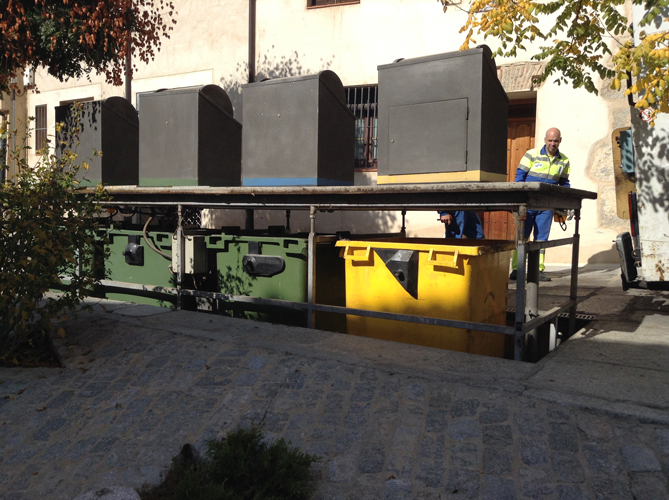 |
 |
Walking Trail Around the City
There is an excellent walking trail that surrounds the city and affords some great views of Segovia's cathedral and the Alcazar.
Dropping down past the cathedral through the Jewish Quarter, exit through Puerta San Andres, and drop down a set of stairs to
Calle Cuesta de los Hoyos. Go West along the city walls for awhile, then walk along the Arroyo de Clamares stream under the Alcazar.
Eventually cross a bridge and walk East on the other side of the city, eventually coming to Paseo la Almeda de Parral. Cross the Rio
Eresma to the Paseo de Santo Domingo de Guzman and re-enter the city proper.
 |
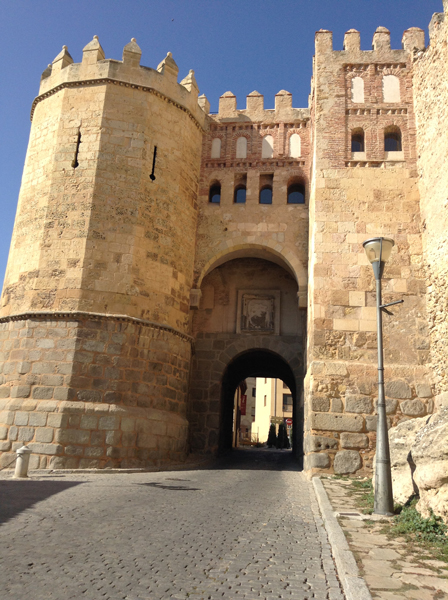 |
| Puerta San Andres, entrance to the old Jewish quarter, 15th century. |
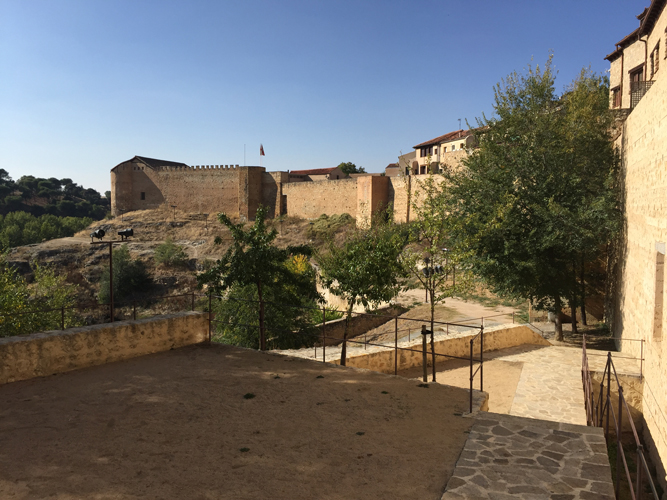 |
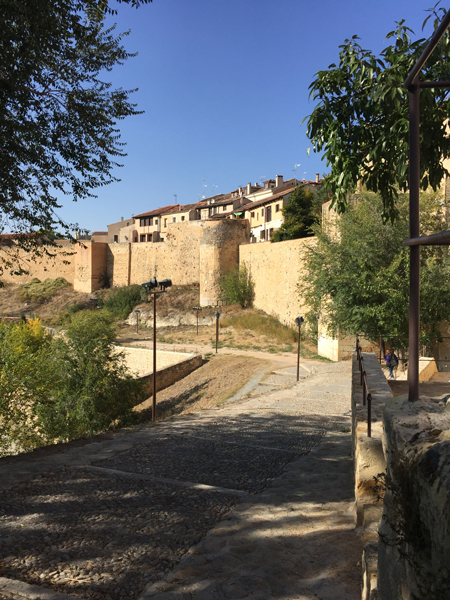 |
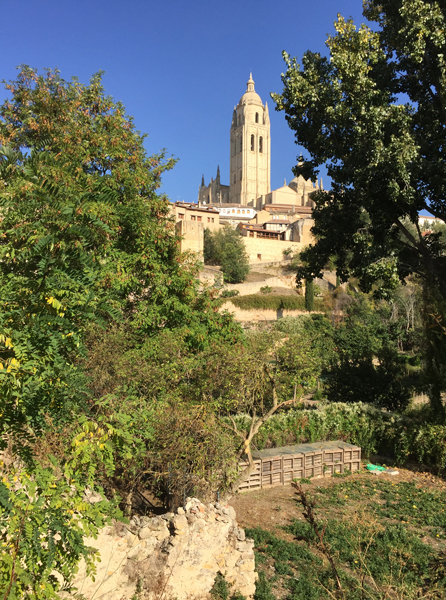 |
| There are vegetable gardens in the rich soil below the city walls. |
 |
| Looking back toward the cathedral. |
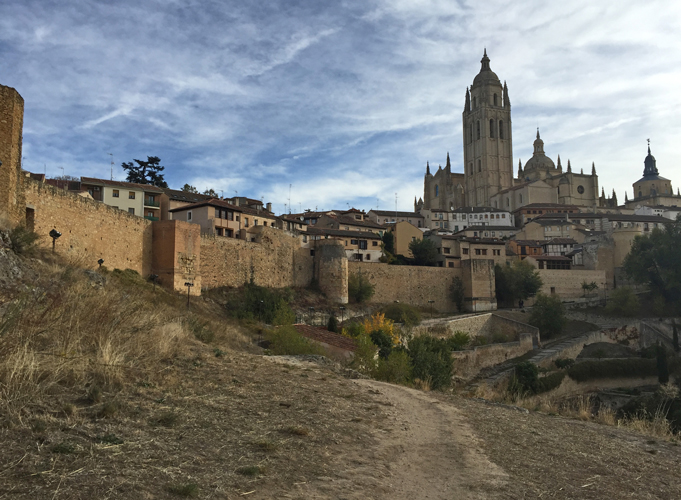 |
 |
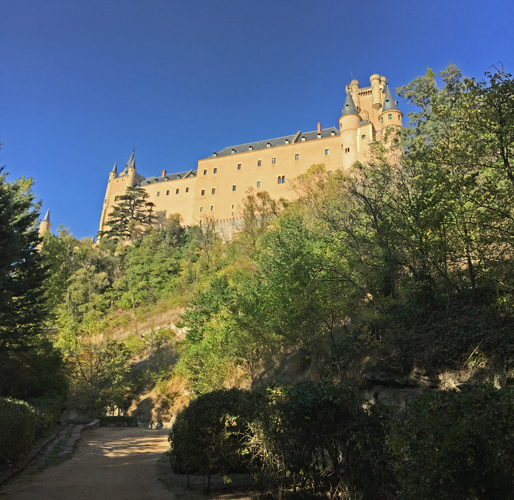 |
| The Alcazar from the South side. |
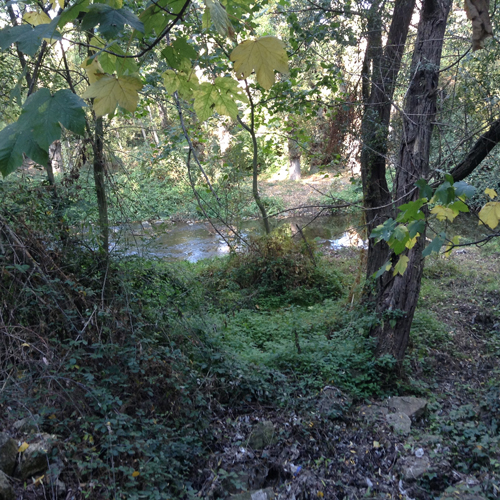 |
 |
| Crossing Arroyo de Clamares. |
 |
| Looking at the Alcazar from the North side. |
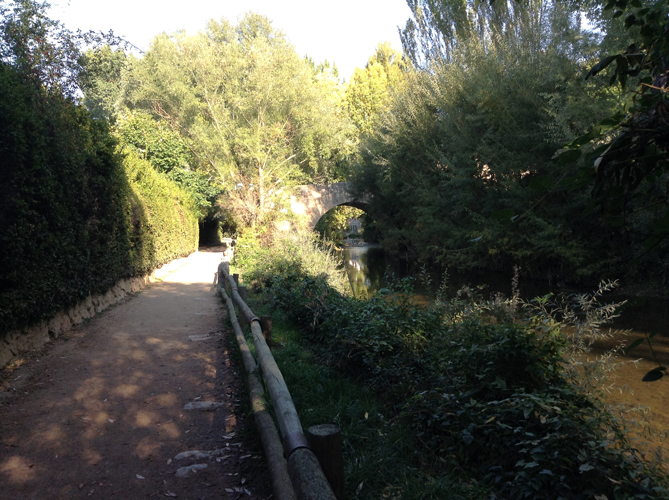 |
 |
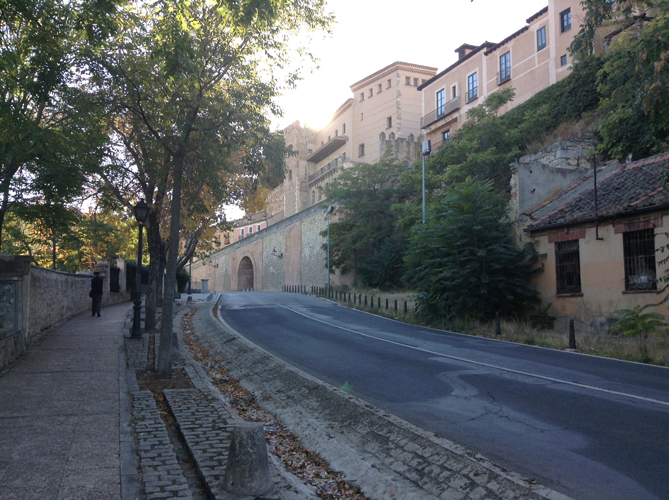 |
| Paseo de Santo Domingo de Guzman. |
Just below the Puerta San Andres, there is a trail that leads to the Jewish cemetary.
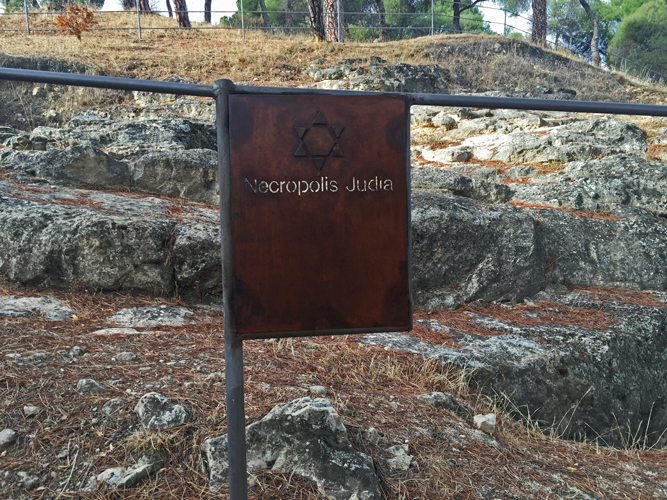 |
| Entrance to the cemetary. |
 |
| Sepulchres were carved into the rock. |
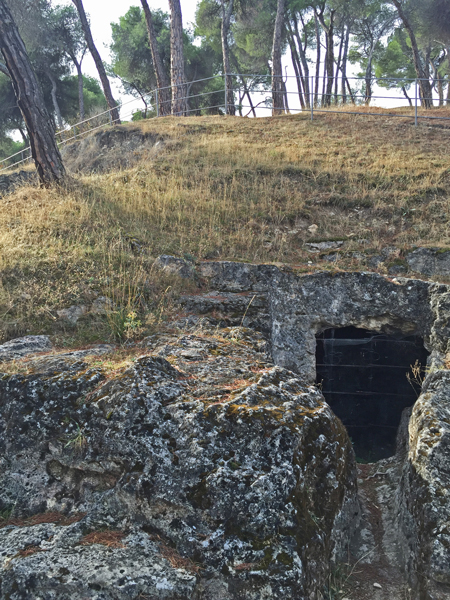 |
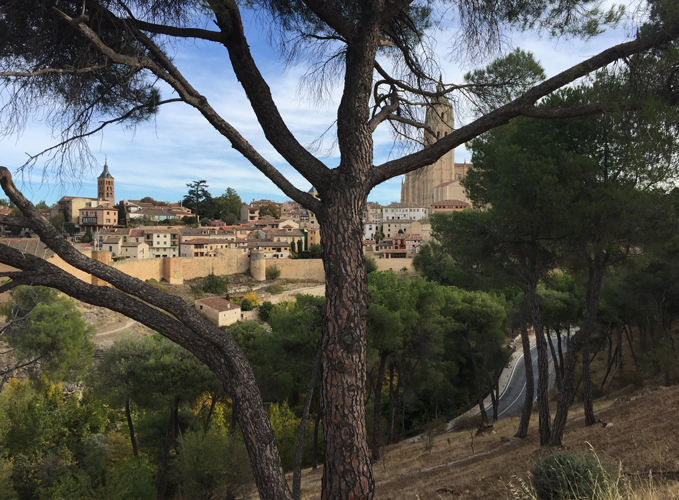 |
| View of the city from the Jewish cemetary. |
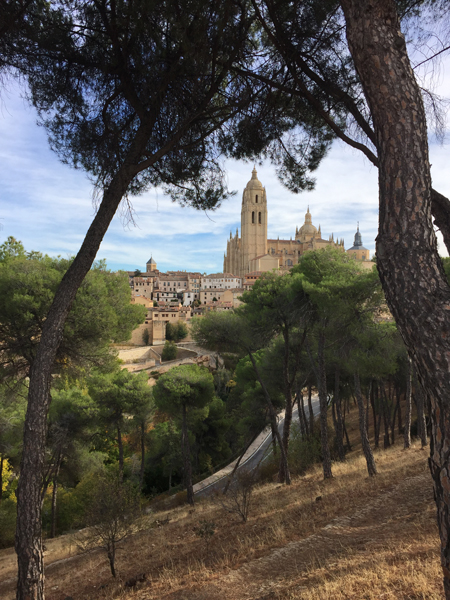 |
Back to Europe 2015
Alcalá de Henares
Carbonero el Mayor
Valladolid